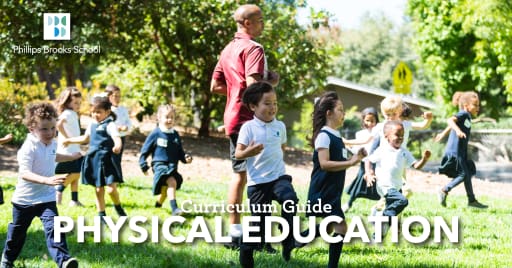locomotor movement is a fundamental part of child development. It helps children develop their physical skills, coordination, and balance. It also helps them learn about their bodies and how to move through space. As parents and educators, we can play a vital role in helping children develop their locomotor skills. This article will provide you with a comprehensive overview of locomotor movement, including its benefits for children and how to teach it effectively. We will also provide you with a variety of activities and games to promote locomotor movement.

Locomotor Movement: Understanding the Body’s Movement Mechanics
Types of Locomotor Movement
Locomotor movement is any type of movement that involves moving the body from one place to another. There are many different types of locomotor movement, including walking, running, jumping, hopping, skipping, galloping, and sliding. Each type of locomotor movement requires a different combination of muscle groups and coordination.
Walking is the most basic type of locomotor movement. It involves alternating steps with each leg, while keeping the body upright. Running is similar to walking, but it is faster and involves a period of time when both feet are off the ground. Jumping is a type of locomotor movement that involves propelling the body into the air using the legs. Hopping is similar to jumping, but it involves using only one leg to propel the body into the air. Skipping is a type of locomotor movement that involves alternating steps while hopping on one leg.
Benefits of Locomotor Movement
Locomotor movement has many benefits for children. It helps them develop their physical skills, coordination, and balance. It also helps them learn about their bodies and how to move through space. Locomotor movement can also be a lot of fun for children. It can help them develop their creativity and imagination.
| Type of Locomotor Movement | Benefits |
|---|---|
| Walking | – Improves balance and coordination – Strengthens leg muscles – Helps develop spatial awareness |
| Running | – Improves cardiovascular health – Strengthens leg muscles – Helps develop endurance |
| Jumping | – Improves leg strength and power – Helps develop coordination and balance – Can be a lot of fun |
| Hopping | – Improves balance and coordination – Strengthens leg muscles – Helps develop spatial awareness |
| Skipping | – Improves coordination and balance – Strengthens leg muscles – Helps develop cardiovascular health |
How to Encourage Locomotor Movement in Children
There are many ways to encourage locomotor movement in children. One way is to provide them with opportunities to play outdoors. Outdoor play provides children with a natural environment in which to move and explore. Another way to encourage locomotor movement is to provide children with toys and equipment that encourage movement. These toys can include balls, jump ropes, and scooters.

How to Teach Locomotor Movement
Create a Positive and Supportive Learning Environment
When teaching locomotor movement, it is important to create a positive and supportive learning environment. This means providing children with the space and freedom to move around and explore. It also means being patient and encouraging, and offering praise and feedback when children are trying new things.
Start with Basic Movements
When teaching locomotor movement, it is important to start with basic movements and gradually progress to more complex movements. This will help children to build a strong foundation and develop the skills they need to perform more complex movements.
| Basic Movements | Complex Movements |
|---|---|
| Walking | Skipping |
| Running | Galloping |
| Jumping | Sliding |
Use a Variety of Activities and Games
To keep children engaged and motivated, it is important to use a variety of activities and games when teaching locomotor movement. These activities and games can be used to practice basic movements, develop coordination and balance, and improve cardiovascular health.

Benefits of Locomotor Movement for Children
Improved Physical Skills
Locomotor movement helps children develop their physical skills, including their balance, coordination, and strength. These skills are essential for everyday activities, such as walking, running, and playing sports. Locomotor movement also helps children develop their fine motor skills, which are important for tasks such as writing and drawing.
Enhanced Cognitive Development
Locomotor movement also benefits children’s cognitive development. It helps them develop their spatial awareness, problem-solving skills, and creativity. Locomotor movement can also help children learn about their bodies and how to move through space.
Improved Social and Emotional Development
Locomotor movement can also help children develop their social and emotional skills. It provides them with opportunities to interact with other children and learn how to cooperate and take turns. Locomotor movement can also help children develop their self-confidence and self-esteem.
| Type of Locomotor Movement | Benefits |
|---|---|
| Walking | – Improves balance and coordination – Strengthens leg muscles – Helps develop spatial awareness |
| Running | – Improves cardiovascular health – Strengthens leg muscles – Helps develop endurance |
| Jumping | – Improves leg strength and power – Helps develop coordination and balance – Can be a lot of fun |
| Hopping | – Improves balance and coordination – Strengthens leg muscles – Helps develop spatial awareness |
| Skipping | – Improves coordination and balance – Strengthens leg muscles – Helps develop cardiovascular health |

Activities and Games to Promote Locomotor Movement
Active Play
One of the best ways to promote locomotor movement in children is to provide them with opportunities for active play. This can include playing outdoors, participating in sports, or dancing. Active play helps children develop their physical skills, coordination, and balance. It also helps them learn about their bodies and how to move through space.
Structured Activities
In addition to active play, there are also a number of structured activities that can be used to promote locomotor movement in children. These activities can be done in a variety of settings, including schools, daycares, and homes. Some examples of structured activities include:
- Locomotor movement circuits
- Obstacle courses
- Dance classes
| Activity | Benefits |
|---|---|
| Locomotor movement circuits | – Improve coordination and balance – Strengthen muscles – Develop cardiovascular health |
| Obstacle courses | – Improve problem-solving skills – Develop agility and coordination – Build confidence |
| Dance classes | – Improve coordination and balance – Develop musicality – Enhance creativity |

Final Thought
Locomotor movement is an essential part of child development. It helps children develop their physical skills, coordination, and balance. It also helps them learn about their bodies and how to move through space. As parents and educators, we can play a vital role in helping children develop their locomotor skills. By providing them with opportunities to practice locomotor movement, we can help them reach their full potential.



